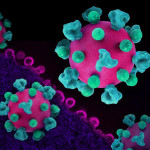Men who start HIV treatment for the first time with a protease inhibitor may take longer to achieve a fully suppressed virus in their semen than those beginning antiretrovirals (ARVs) with non-nucleoside reverse transcriptase inhibitors (NNRTIs) or integrase inhibitors, aidsmap reports.
Publishing their findings in Clinical Infectious Diseases, researchers studied 36 HIV-positive gay men who had not taken ARVs before. They had CD4 counts above 200 and viral loads between 1,000 and 100,000.
The men started treatment with Truvada (tenofovir disoproxil fumarate/emtricitabine). Additionally, for the third ARV in their treatment regimen, they were randomized into three even groups to take either Norvir (ritonavir)-boosted Prezista (darunavir); Edurant (rilpivirine); or Tybost (cobicistat)-boosted Vitekta (elvitegravir). The last two combinations have the same respective components as Complera (rilpivirine/tenofovir disoproxil fumarate/emtricitabine) and Stribild (elvitegravir/cobicistat/emtricitabine/tenofovir disoproxil fumarate).
Prezista is a protease inhibitor; Edurant is an NNRTI; and Vitekta is an integrase inhibitor. The emtricitabine and tenofovir components of Truvada are both nucleoside/nucleotide reverse transcriptase inhibitors (NRTIs). Norvir and Tybost are both so-called boosters that raise the level of other HIV drugs in the body.
After 12 weeks of treatment, all those taking Edurant or Vitekta had a fully suppressed viral load in their semen, while 42 percent of those taking Prezista had a detectable viral load in their semen. After 24 weeks of treatment, only one person in the study, who was taking Prezista (8.3 percent of those on this drug), had a detectable viral load in his semen.
Meanwhile, the blood viral load test result patterns were different. All those taking Vitekta had a fully suppressed blood viral load after 12 weeks of treatment, compared with two thirds of those on Edurant or Prezista.
According to the World Health Organization, it is very unlikely for individuals to transmit HIV when they have a blood viral load below 1,500. It is less clear how viral load in semen correlates to infection risk. In this study, the viral load in men’s semen took just one week to drop below 1,500 among those taking Edurant or Vitekta, while taking two weeks for those taking Prezista. Men’s seminal viral load dropped below 100 after an average of four weeks among those on Edurant or Vitekta, compared with eight to 12 weeks among those on Edurant.
This study seems to imply that those starting treatment with a protease inhibitor may take longer to achieve a maximum reduction in infection risk from being on ARVs. Additionally, the study appears to suggest that among those who start treatment with a protease inhibitor, there may be a significant initial discrepancy between the result of a blood viral load test and the viral load in semen. While blood viral load tests are a standard part of HIV treatment monitoring, semen viral load tests are not.
To read the aidsmap article, click here.
To read the study abstract, click here.







Comments
Comments